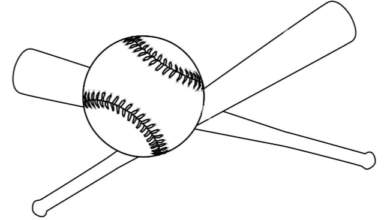Rugby Tactics And Strategies: Mastering The Game

Rugby is a sport that combines physical prowess, tactical intelligence, and teamwork. Knowing the nuances of rugby tactics and techniques can improve your effectiveness as a player, coach, or fan, as well as your enjoyment of the game. This article delves into some of the key tactics and strategies used in rugby, helping you master the game.
A Look At The Basics
At its core, rugby is a territorial game. The main goal is to move the ball into the opponent’s territory and score points by either kicking it through the opponent’s goalposts or grounding it in the in-goal area (a try). This objective drives the tactical approaches used by teams.
Offensive Strategies
1. Phase Play
Phase play is a fundamental offensive strategy involving a series of planned movements aimed at breaking down the opponent’s defense. After each tackle, the ball is quickly recycled to maintain momentum and exploit gaps. This requires precise coordination and communication among players.
2. Set Pieces
Scrums and lineouts are examples of set pieces that present opportunities for organized attacks. Teams often have specific moves designed to exploit the weaknesses of the opposition during these moments. For example, a well-executed lineout can create a platform for a driving maul, which can be difficult to defend against. By incorporating these strategies and studying tips on NRL tactics, players and coaches can gain valuable insights to elevate their game and outmaneuver their opponents on the field.
3. Backline Moves
Backline moves are pre-planned plays involving the backline players. These moves often involve intricate passing patterns and decoy runners to confuse the defense and create space. Classic examples include the switch pass and the loop move, where players swap positions, and the ball is passed back to create an overlap.
4. Kicking Tactics
Kicking can be an effective offensive weapon. Tactical kicking includes grubber kicks, box kicks, and high bombs (also known as up-and-unders). These kicks aim to gain territory, put pressure on the opponent, or create scoring opportunities. A well-placed kick can turn the defense and put them under significant pressure.
Defensive Strategies
1. Line Speed
One of the most critical aspects of defense is line speed. This involves the defensive line advancing quickly to shut down the space and time available to the attacking team. A fast defensive line can disrupt the opposition’s attacking rhythm and force errors.
2. Tackling Techniques
Effective tackling is essential for a strong defense. Tacklers must aim to bring down the ball carrier securely while also attempting to disrupt the offload or recycling of the ball. Low tackles around the legs can stop momentum, while higher tackles can be used to hold up the ball and create a maul situation.
3. Defensive Patterns
Teams often employ specific defensive patterns, such as drift defense or blitz defense. Drift defense involves moving laterally with the attacking line, forcing the attackers to the sideline. Blitz defense, on the other hand, involves a rapid advance by the defensive line to cut off attacking options and force mistakes.
4. Counter-Rucking
Counter-rucking is a tactic used to disrupt the opposition’s ball at the breakdown. By committing players to the ruck aggressively, the defending team can either slow down the ball or even turn it over, providing a valuable attacking opportunity.
Transition Play
Transition play refers to the moments when possession changes from one team to another. Effective transition strategies can be the difference between a defensive scramble and a counter-attacking opportunity.
1. Turnover Attacks
When a team wins a turnover, whether through an interception, a stolen ball at the ruck, or a handling error by the opposition, they should be ready to exploit the disorganized defense. Quick passes and support play are crucial to capitalizing on these opportunities.
2. Kick Return
Receiving a kick provides an opportunity to counter-attack. The player fielding the kick should look to link up with teammates and exploit any gaps left by the kicking team. Structured support lines and communication are vital in turning a defensive situation into an offensive one.
Adapting To The Opponent
While having a set game plan is essential, adaptability is equally important. Teams must analyze their opponents and adjust their tactics accordingly. This involves studying the opponent’s strengths and weaknesses and making in-game adjustments based on the unfolding dynamics.
1. Analyzing Opponents
Pre-match preparation includes analyzing the opponent’s previous games to understand their strategies and key players. This allows teams to devise specific plans to counter the opponent’s strengths and exploit their weaknesses.
2. In-Game Adjustments
During the game, captains and coaches must be able to make real-time decisions and adjustments. This could involve changing defensive patterns, altering the focus of attacks, or making strategic substitutions.
Conclusion
Mastering rugby tactics and strategies requires a deep understanding of the game, meticulous planning, and the ability to adapt. Teams can improve their performance and raise their chances of winning by concentrating on offensive and defensive tactics, transition play, and adaptability. Whether you are on the field or in the stands, appreciating these tactical elements will enrich your rugby experience.






